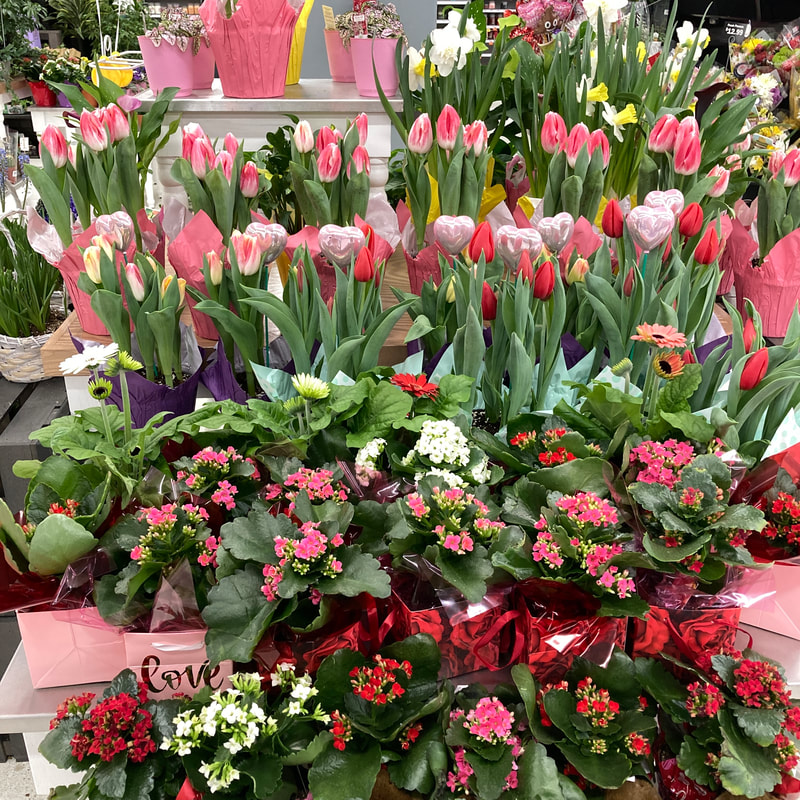|
Photo and article by Donna Iverson This time of year, if you are a gardener, you look for signs of spring wherever you can find them…even the shelves of your local grocery store. Planted in the fall, potted tulips and daffodils emerge in the dead of winter if exposed to enough light and sunshine. A member of the lily family, their name is derived from the Turkish word for turban, which the flower petals resemble when turned upside down. Today, there are 150 species and 3,500 varieties of tulips of every color including striped. The striped variety was a genetic mutation caused by an aphid virus. According to florists, the color of the tulip has romantic meanings, like red for true love, purple for loyalty, and white for apology. A Valentine analog message board. And for you herbalists out there, the petals are edible and can be substituted for onion in recipes. The petals are also light sensitive, and will turn toward the sun whether in the ground or in a pot. Come early spring, a walk in the woods will reward you with the sight of native flowers which grow from bulbs, including spring beauty, bleeding heart, bloodroot, Dutchman’s breeches, trillium, snowdrops, squill, trout lily, hyacinths, jack-in-the-pulpit, and Virginia bluebells. Native to Central Asia near the Russian-Chinese border, tulips grow there as wildflowers. By the Middle Ages, tulips could be found in Turkey. Tulips were then introduced to the Western world by Augier Ghislain de Busbecq the Viennese ambassador to Turkey, who sent seeds to Austria. From there, the Dutch gardener Carolus Clausius recognized their potential and began planting tulips in the Netherlands in 1593. Tulip mania followed with the price of a tulip bulb reaching astronomical levels. By the mid 1600s, the Netherlands was the largest producer of tulip bulbs in the world, which they remain today, averaging 3 billion bulbs a year for sale. In early May, the city of Holland, Michigan will hold its annual Tulip Festival which was cancelled last year due to the pandemic. It has reopened this year from May 7 to May 15. Each year, Michigan Hollanders plant 6 million tulip bulbs, of every color and variety. This event attracts 600,000 visitors from around the country and the world. It has been held for 92 years. An event not to miss if you are a flower lover and want to enjoy the many flower-inspired festivities which include a parade with residents in Dutch costume.
0 Comments
Your comment will be posted after it is approved.
Leave a Reply. |
Archives
April 2024
Categories |

 RSS Feed
RSS Feed